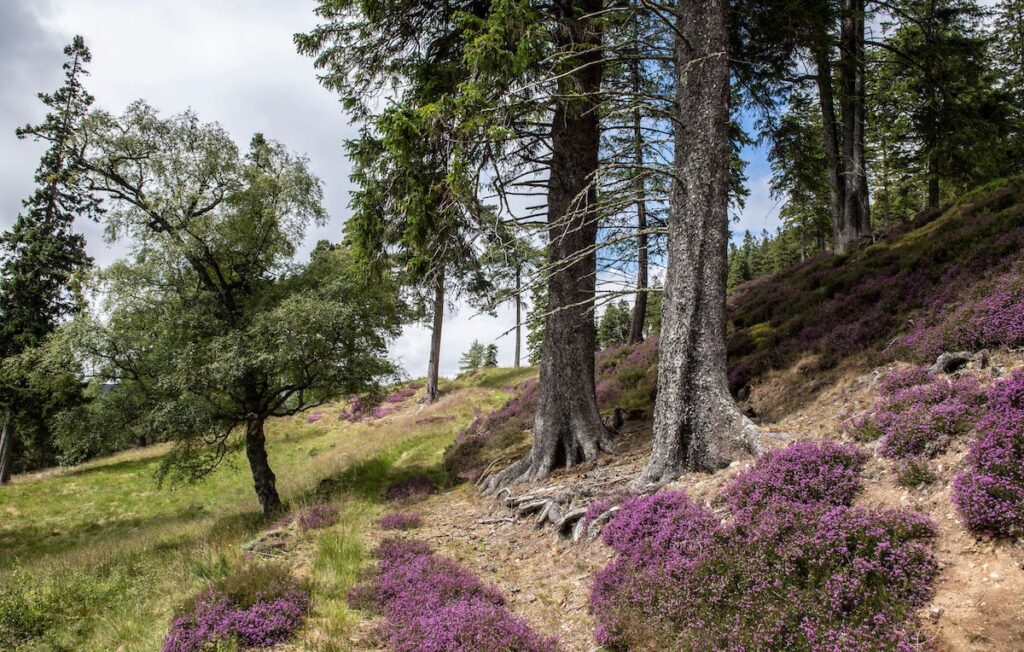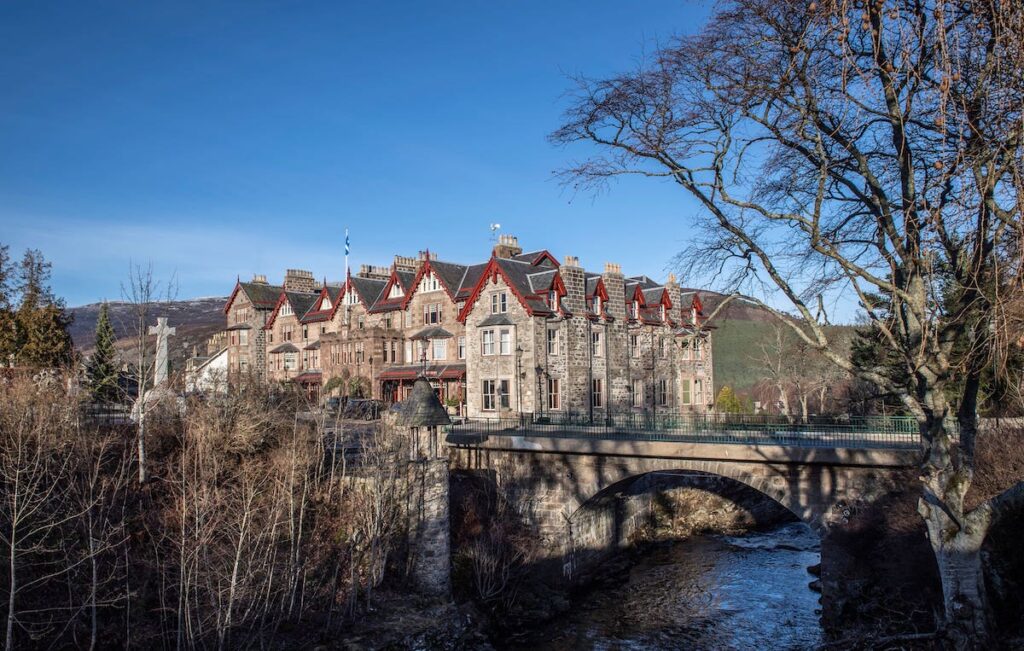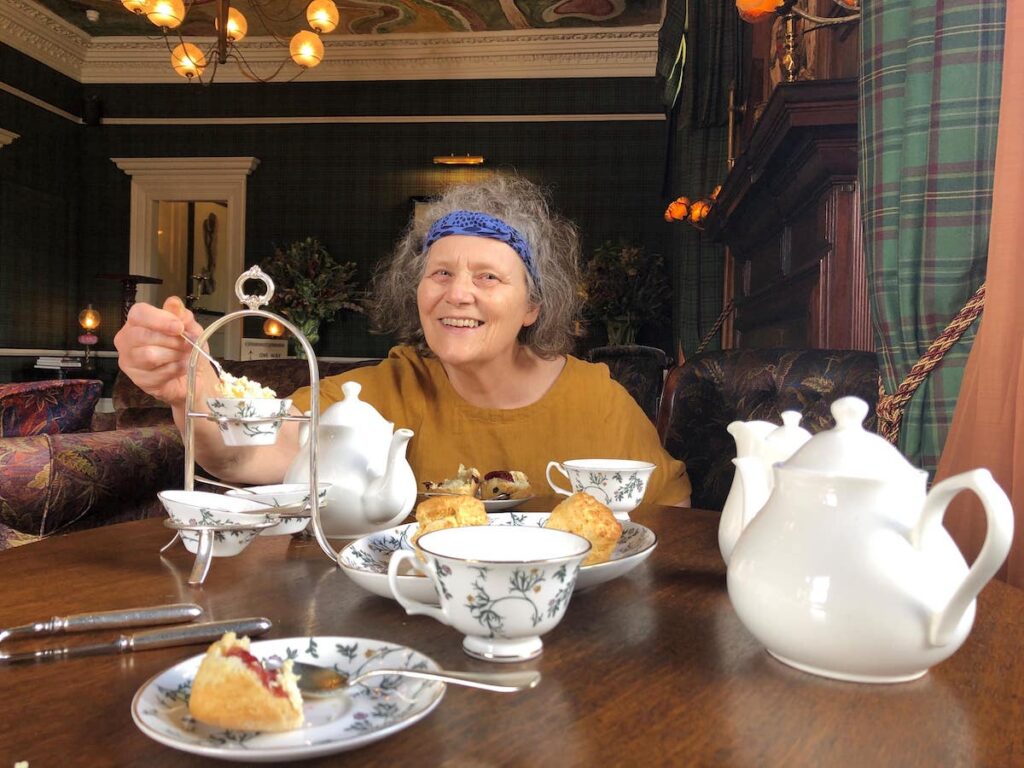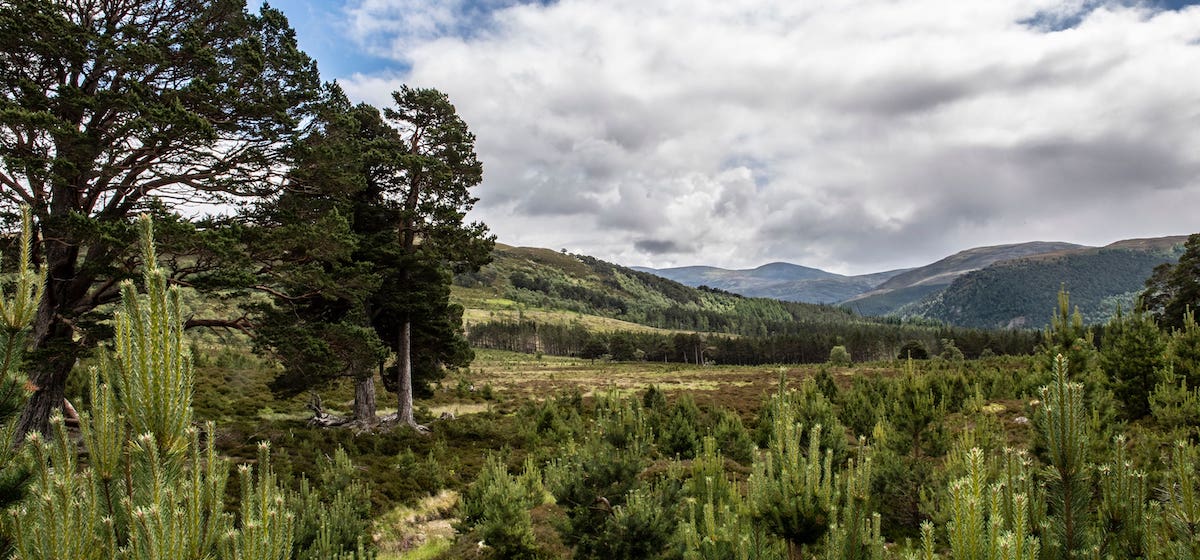“To aim for the highest point is not the only way to climb a mountain,” wrote Nan Shepherd in her 20th century nature masterpiece, The Living Mountain.
The Aberdeen-born poet and writer, whose face now adorns the Scottish £5 note, made it her life’s quest to find the “essential nature” of the Cairngorms. In the process of exploring its graceful, gleaming rivers and high plateaus “as delectable as honey”, she discovered a lot about herself too.
Twice the size of the Lake District, East Scotland’s Cairngorms National Park is a wilderness area of crisp, clear lochs, ancient forests and glens bristling with vibrant purple heather. Promising calm, quiet and the freedom of space, it seemed an obvious choice for a post-lockdown adventure with my mum, Gabriella.
Aged over 70 and recovering from heart surgery, my mum had been shielding since March. I’m not a fan of Zoom or FaceTime, so when we met at Heathrow airport to catch our flight to Aberdeen, it was the first time I’d seen her in four months.
In a world where every move seems to be dominated by COVID-19, the decision to travel isn’t an easy one to make at any age. But as days disappear and months march on, there’s an urgency to get moving. I’ve never really understood why time accelerates with age. The harder we grip, the more it slips away. Maybe it’s the realisation that everything is finite, including us.

Then there was the risk of being indefinitely confined by anxiety.
“If I don’t go out soon, I’ll never have the confidence,” my mum confessed.
So, armed with face masks, sanitiser and a sensible degree of caution, we refused to be beaten by fear.
Nan chose to camp her way around the Cairngorms. But we’ve opted for a greater degree of comfort at the Fife Arms, a regal Victorian property in the village of Braemar on the banks of the River Clunie, matched in magnificence to its surrounding mountain landscape.

After having our temperatures checked, we’re ushered inside by the hotel’s welcoming ghillies who apologise profusely for the impersonality of Perspex panels on reception, visors and the absence of Fife’s bespoke tartan blankets in rooms.
With Scotland only recently emerging from lockdown on 15 July, the hotel is quickly adapting to a new and unfamiliar way of working. Rooms are deep cleaned between guests, breakfast buffets have been ditched in favour of timed sittings, and a one-way system is in place throughout the property.
Otherwise, it all feels refreshingly normal.

Owned by art dealers Iwan and Manuela Wirth (owners of the Hauser & Wirth gallery), who breathed new life into its rundown shell and reopened in 2018, the Fife is filled with 16,000 artworks, antiques and collectables.
When you’ve been indoors for so long, everything has a new and shiny appeal. But here in this Disneyland of culture and creativity, my mum has the wide-eyed wonder of a child embracing infinity and beyond.
Paying homage to Braemar’s Victorian roots, furnishings reflect the grandeur of that time: an ornately carved walnut wood fireplace depicting works by Scottish poet Robert Burns dominates the reception; chairs upholstered in Liberty fabrics decorate the drawing room; and natural history specimens are displayed in curiosity cabinets, or used to create whimsical tableaux in bell jars. Not to everyone’s modern PC tastes – one corridor alone has 100 pieces of taxidermy, upstaged only by an eerie waxwork model of Queen Victoria in the library, purchased from Madame Tussaud’s.

If a wall of stags’ heads is divisive, modern artworks incorporating antlers are pleasingly palatable: hanging above the main staircase, Richard Jackson’s Red Deer Chandelier is a tangle of neon bagpipe drones and glass antlers.
From outspoken sculptures to understated sketches, every corner of the Fife is covered in conversation-provoking art.
Works by Picasso, Brueghel the Younger and Man Ray hang on walls; one of Louise Bourgeois’ bronze spiders straddles the courtyard. But an even more impressive find are some watercolours of royal estates painted by Prince Charles and a sketch by Queen Victoria of a stag shot by her close confidant John Brown.
Braemar’s relationship with royalty reaches back to 1852 when Prince Albert purchased Balmoral Estate for his sovereign wife. “She was passionate about this place,” Katy Fennema of Braemar Highland Experience tells me. The former musician, whose family have 300 years of history in the area, now runs local history, wilderness and wildlife tours with her husband, Julian.
During a morning driving tour, she shares tales of brigands hung from tree boughs, and delights in stories of Chanel’s fashion rival Elsa Schiaparelli, who became fascinated with Braemar when her friend, Vogue editor Frances Lovell Oldham, married a laird. The two ladies would literally go on to paint parts of the town shocking pink, and an art deco bar at the Fife is named after Elsa.

Much of the land here has been shaped by aristocracy. Patchworks of charred heather on the hillside are the remnants of controlled burns, used to boost a grouse population in time for shoots.
Yet so much remains wild. Along the Queen’s Drive walking trail, trees are laden with tufty beards of lichen, an indicator of the air’s purity.
At 5.30am one day, mum and I ramble through the Morrone Birkwood, a relic of deciduous woodland that once covered the Cairngorms. On the way up, we watch hares and red squirrels scamper through a stadium used to host the Braemar Gathering, one of the most popular Highland Games. And we detour past the house where Robert Louis Stephenson spent a miserable, rainy three months in 1881, emerging with the first 16 chapters of Treasure Island.

It’s a very different scene today. Sunlight splinters through gate pickets as we clamber onto a trail scattered with pinecones. Streams trickle melodically from the mountainside and the scent of honeysuckle is dizzying.
Juniper, blaeberries, meadowsweet and yarrow – so many plants thrive in this healthy environment. Later in the day, herbalist and forager Natasha Lloyd introduces us to her open-air medicine cabinet. She recommends treatments for my mum’s liver, and I learn how to eat a raw nettle without getting stung. The common nettle is packed with vitamin D, which may boost the immune system against respiratory viruses such as COVID-19.
Fortunately, there were no cases of coronavirus in Braemar. Although one famous figure down the road made headlines: Prince Charles self-isolated at Balmoral when he fell ill at the beginning of lockdown.

It’s easy to see why the royals come here to escape and recuperate. The Queen arrives for her annual summer holiday every August. We follow one of her favourite trails through the Ballochbuie Forest, a protected tract of 300-year-old pines saved from felling by Queen Victoria, leading to the Honka Hut – a simple cabin where Elizabeth II likes to picnic.
In the past, hikers claim to have “run into” Her Royal Highness walking the corgis, but blissfully, we don’t see a soul.
It was silence and solitude that guided Nan Shepherd into the mountains. Similarly, it helps my mum readjust to an outside world fraught with complications, but beautiful at its core.
How to plan your trip
Rooms at the Fife Arms start from $416 AUD (including breakfast) in a Croft Room. For more information or to book, visit thefifearms.com.
Have you ever been to Scotland? Where is the first place you will visit when international travel is allowed again?
– With PA
If you enjoy our content, don’t keep it to yourself. Share our free eNews with your friends and encourage them to sign up.
Related articles:
https://www.yourlifechoices.com.au/travel/destinations/journey-through-remote-scotland
https://www.yourlifechoices.com.au/travel/destinations/top-autumn-destinations-2021
https://www.yourlifechoices.com.au/travel/travel-resources/how-to-embrace-isolation-on-your-next-holiday

